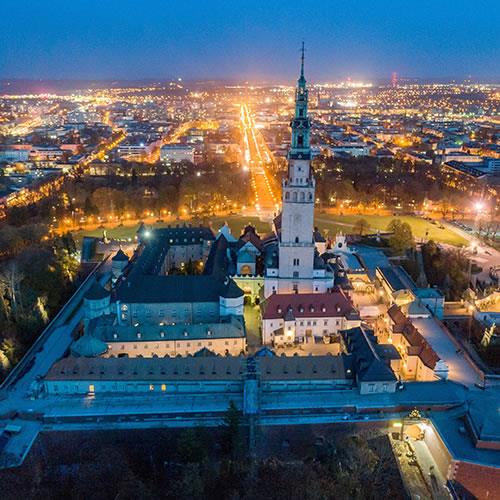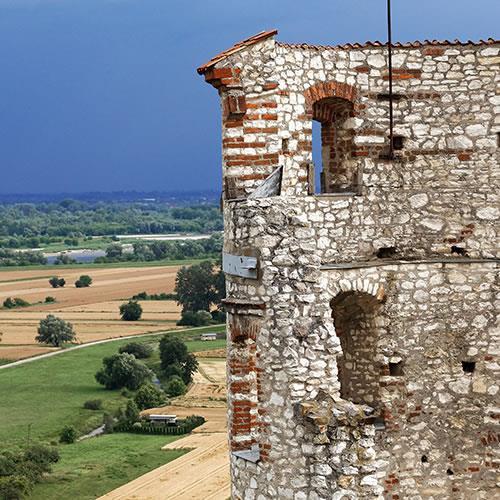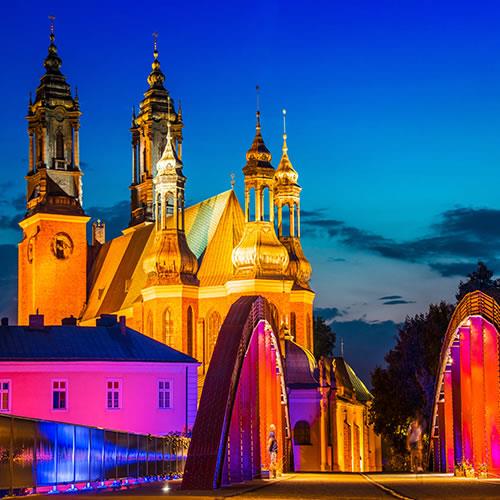close X
Krakow
Krakow is one of the oldest cities in Poland and one of the cultural and artistic centers of the country, the former seat of the Polish kings and the former national capital. Among the highlights of the city are: the Royal Castle and Cathedral on Wawel Hill; the medieval Old Town with its beautiful Main Square; the 14th-century buildings of the Jagiellonian University; as well as Kazimierz, the historical centre of Krakow's Jewish religious and social life.
Explore the Main Square, St. Mary's Basilica, Wawel Cathedral, The Cloth Hall, Planty Park, Kazimierz, Ghetto Heroes Square, Collegium Maius, National Museum, St. Florian's Gate, and so much more.
close X
Warsaw
Much of Warsaw's historic center was painstakingly recreated and today's Old Town buildings are closer to the original architecture than they were ever before. It has a wealth of shops and restaurants to potter around in. The city also boasts many green spaces, with leafy parks where rowing boats cruise past outdoor cafés, during the summer, and free classical concerts attract. In addition, the Former Jewish ghetto is a stark reminder of the unforgiving hand of history. The nightlife scene is equally surprising, with the city's increasingly well-dressed youth flocking to the countless bars and clubs of a city that now hums after dark.
Visit and explore the Palace of Culture and Science, Royal Castle in Warsaw, Lazienki Park, National Museum, Copernicus Science Centre, Museum of the History of the Polish Jews, Zacheta National Gallery of Art, Wilanow Palace, and so much more.
close X
Gdansk
Gdansk, the largest Polish seaport on the Baltic, has been the site of many historic moments and the home of many important people. It is the cradle of the centuries-old Kashubian literary and cultural tradition, which still thrives today. Gdansk was the site of the first battle of World War II, on a beach north of town. It was also the site where the Solidarity movement was born, and by extension, the birth of post-Communist Poland.
Visit and explore The Crane, Gdansk Shipyard, European Solidarity Centre, The Crane, St. Mary's Basilica, Golden Gate, Neptune's Fountain, Long Lane, Long Market, Oliwa Cathedral, Wisloujscie Fortress, and so much more.
close X
Auschwitz Birkenau
The Auschwitz-Birkenau Nazi Concentration Camp, a haunting emblem of the Holocaust, embodies the depths of human suffering and the systematic annihilation orchestrated by the Nazi regime. Comprising Auschwitz I and Auschwitz II-Birkenau, it was a network of terror, encompassing barracks, watchtowers, and barbed wire that entrapped millions. Auschwitz I served as the administrative center, while Birkenau, with its sprawling expanse, was the heart of extermination, equipped with gas chambers and crematoria. The sheer scale of horror within these walls, where countless innocents faced starvation, disease, and extermination, remains an indelible scar on human history. Today, as a museum and memorial, it stands as a poignant reminder of the irreversible tragedy that unfolded, urging remembrance, education, and vigilance against hatred and intolerance.
close X
Auschwitz Birkenau
The Auschwitz-Birkenau Nazi Concentration Camp, a haunting emblem of the Holocaust, embodies the depths of human suffering and the systematic annihilation orchestrated by the Nazi regime. Comprising Auschwitz I and Auschwitz II-Birkenau, it was a network of terror, encompassing barracks, watchtowers, and barbed wire that entrapped millions. Auschwitz I served as the administrative center, while Birkenau, with its sprawling expanse, was the heart of extermination, equipped with gas chambers and crematoria. The sheer scale of horror within these walls, where countless innocents faced starvation, disease, and extermination, remains an indelible scar on human history. Today, as a museum and memorial, it stands as a poignant reminder of the irreversible tragedy that unfolded, urging remembrance, education, and vigilance against hatred and intolerance.
close X
Bielsko-Biala
The city of Bielsko-Biala is situated on the Biala River in the Silesian Voivodeship, with the formerly German-speaking town of Bielsko on the left bank, and the smaller Polish community of Biala located on the east bank. Bielsko-Biala is well-known for its Art Nouveau architecture, and is sometimes referred to as the "Little Vienna" of Poland. Sights include the formidable 16th-century Bielsko Castle, home of the Sulkowski princes; the Frog House, an ornate mansion featuring, you guessed it, statues of frogs over the entryway; the Weaver's House, a noteworthy example of craftsman architecture; and multiple ski resorts located in the Silesian Beskids mountain range. It is home to a small but visible Jewish community, which before the Holocaust comprised about a fifth of the city's population.
Discover the amazing Bielsko Castle, Bielsko-Biala Museum, Roman Catholic Church of Divine Providence, Frog House, Weaver`s House, Silesian Beskids, Cathedral of St. Nicholas, Szyndzielnia, and so much more.
close X
Bydgoszcz
Bydgoszcz is one of the ten largest cities in Poland, and co-capital of Kuyavia-Pomerania with Torun. Situated on the Brda and Vistula rivers, Bydgoszcz is noted for its culture, architecture, and educational opportunities. A large college town, it is home to Casimir the Great University and the Nicolaus Copernicus University Medical College, among other schools. A regional cultural epicenter, Bydgoszcz is home to an opera house called Opera Nova, as well as the Pomeranian Philharmonic symphony orchestra. Don't miss a chance to tour historic Mill Island, located on the Bydgoszcz Canal which connects the Brda River to the Elbe and the Rhine. The half-timber granaries along Grodzka Street, the most famous street in the Old Town, are considered synonymous with the city. Elsewhere, the heavy concentration of neo-Gothic, neo-Baroque and neo-Classical buildings earned the city the nickname of "Little Berlin".
Visit and explore the amazing Mill Island, Opera Nova, Brda River, Bydgoszcz Canal, Deluge Fountain, St. Vincent de Paul Basilica Minor, Casimir the Great University, Zoological Garden of Polish Fauna, Wolnosci Square, and so much more.






















